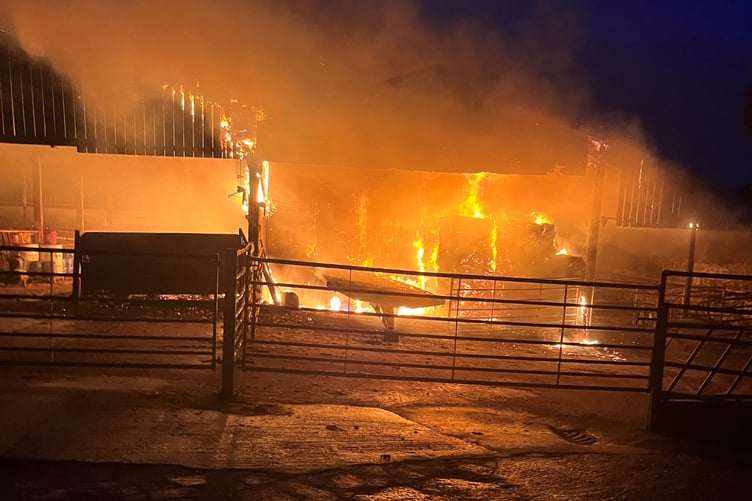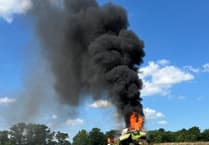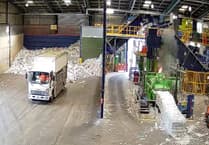A LIVESTOCK farmer from Cornwall has reflected on the impact of a farm fire which engulfed his barn back in 2023.
Robert Trudgian has discovered that the impacts of a farm fire can last for years, as he continues to feel the effects.
While his insurer,NFU Mutual, moved quickly to deal with his claim, a range of factors including the presence of asbestos and the need to move an electricity pole slowed site clearance and re-building work to a snail’s pace.
The fire broke out at 3am on July 13, 2023, in the bay of a large farm building where hay was being stored. Mr Trudgian was alerted by a neighbour and rushed to the scene.
The flames destroyed around 200 round bales of hay, a vintage tractor, and another tractor used for scraping the yard, plus a range of other tools and equipment. The building itself was also destroyed.
Seven fire appliances attended and were able to extinguish the fire at Savath Farm, near St Austell. But Mr Trudgian said there were delays in getting water from a hydrant around a quarter of mile away from the scene of the blaze.
In the weeks after the fire, the suspected presence of asbestos in the remains of the building severely slowed up progress on clearing the site and starting on a rebuild, with the relocation of power lines also hampering the work.
“The fire itself came as a big shock,” said Mr Trudgian. “My wife and daughter were at home at the time, so I was concerned for them – and seeing all your hard work go up in flames is very difficult.
“But no one was hurt, no livestock was injured, and the only losses were the hay, tools, equipment, and buildings - all of which can be replaced.”
He said the greatest frustration came in the aftermath of the fire as he had livestock to house in winter and fodder and straw to store. Although he has been able to keep the farm operating, work on the final rebuild is still not complete.
He said the cause of the fire was a mystery, but he was confident it had not been triggered by an over-heated hay bale. “I am 65 and I have been making hay all my life and that was well-made hay.
“I purposely left it an extra day before I baled it and I didn’t bring the bales in for a fortnight. It had been in the shed for about three weeks before the fire and there was no sign of over-heating.”
Mr Trudgian runs a suckler herd; calving around 160 cows every year and selling the calves as store cattle at between 11 and 15 months old. He speculates that rats may have chewed through an electric cable in the building, causing sparks to ignite the hay, but believes the true cause of the fire will never be known.
And he had one piece of advice for fellow farmers. “Find out where your nearest fire hydrant is and make sure it is in good condition.”





Comments
This article has no comments yet. Be the first to leave a comment.